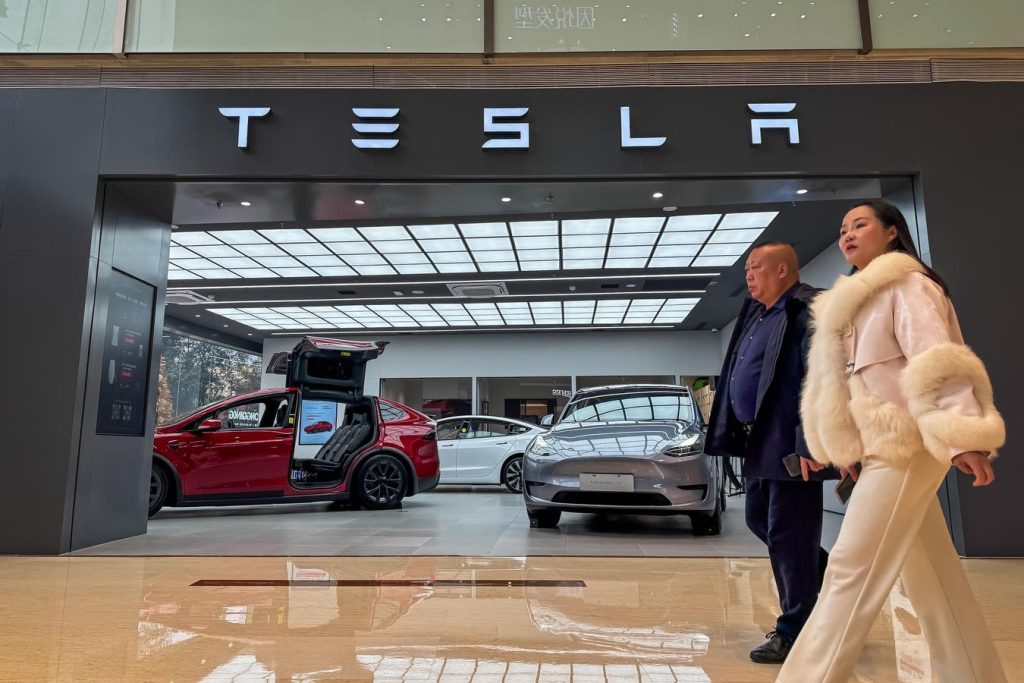Tesla’s 2024 has been marked by a notable shift in its sales strategy, contradicting CEO Elon Musk’s previous staunch opposition to discounts. Facing a projected 6% decline in U.S. sales and the potential for its first-ever global sales drop, the electric vehicle giant has implemented various incentives to boost demand. These include significantly reduced lease prices for its popular Model 3 and Model Y, revived referral programs offering discounts to new customers, and interest-free loans in China. This strategic shift underscores the increasing pressure Tesla faces from a growingly competitive EV market. Industry analysts attribute this pressure to the influx of new electric models from traditional automakers, which are chipping away at Tesla’s market share dominance.
While Tesla’s deliveries continue to grow in China, softened demand in the U.S. and Europe poses a significant challenge. The company needs a record-breaking fourth-quarter performance to avoid a global sales decline, a feat analysts view with skepticism. Despite these challenges, Tesla’s stock price has paradoxically soared, fueled by investor optimism regarding a potentially more favorable regulatory environment under a new Trump administration. This optimism stems from expectations of lighter regulations, fewer safety investigations, and expedited development of autonomous driving technologies, a key area of future growth for Tesla. However, the company’s ability to effectively compete with established players in the robotaxi space, such as Alphabet’s Waymo, remains to be seen.
The implementation of discounts represents a departure from Tesla’s previous premium pricing strategy. Musk had previously asserted that discounts would never be offered on new Tesla vehicles, viewing them as detrimental to profit margins and resale values. Now, however, the company is not only offering discounted leases but also providing price reductions on vehicles from its existing inventory. These price adjustments are particularly notable in China, a crucial market for Tesla’s profitability, where sales have been bolstered by no-interest loans and cash discounts on the Model Y.
A key factor contributing to Tesla’s sales challenges is its aging product lineup. Excluding the highly anticipated but polarizing Cybertruck, Tesla hasn’t introduced a new mainstream vehicle since the Model Y nearly five years ago. Its second best-selling model, the Model 3, has remained largely unchanged since its 2017 debut. This contrasts sharply with competitors like Hyundai and GM, which have aggressively expanded their electric vehicle offerings with a range of new models across different price points. These newer models, often boasting updated designs and features, are attracting buyers who may be seeking alternatives to Tesla’s established but somewhat stagnant lineup.
To address this, Musk has promised the introduction of more affordable Tesla models in the near future, projecting significant sales growth as a result. Speculation abounds regarding a potential “Model Q” or cheaper versions of the existing Model 3 and Y. However, Musk’s recent comments dismissing the idea of a $25,000 budget EV, often referred to as the Model 2, suggest a focus on autonomous driving technology rather than expanding the lower end of the market. While the addition of more affordable models is generally viewed as a positive step, analysts anticipate potential production challenges and “lumpy” sales during the initial rollout phase.
The overall U.S. EV market, while experiencing a slight slowdown in 2024, is still projected to achieve record sales figures. However, the outlook for 2025 remains uncertain due to potential policy changes regarding the existing EV tax credit. While the potential elimination of this credit under a new Trump administration could impact sales, the timing and implementation of such a change remain unclear, with potential delays pushing it to mid-2025 or even 2026. Despite these uncertainties, the increasing availability of new EV models and a general downward trend in prices are expected to continue driving market growth. While Tesla faces challenges to maintain its market share dominance, the overall EV market shows signs of continued expansion and diversification.

